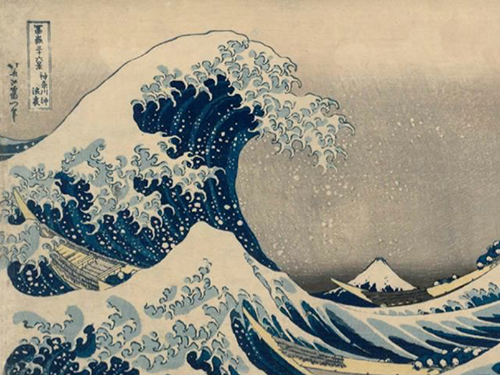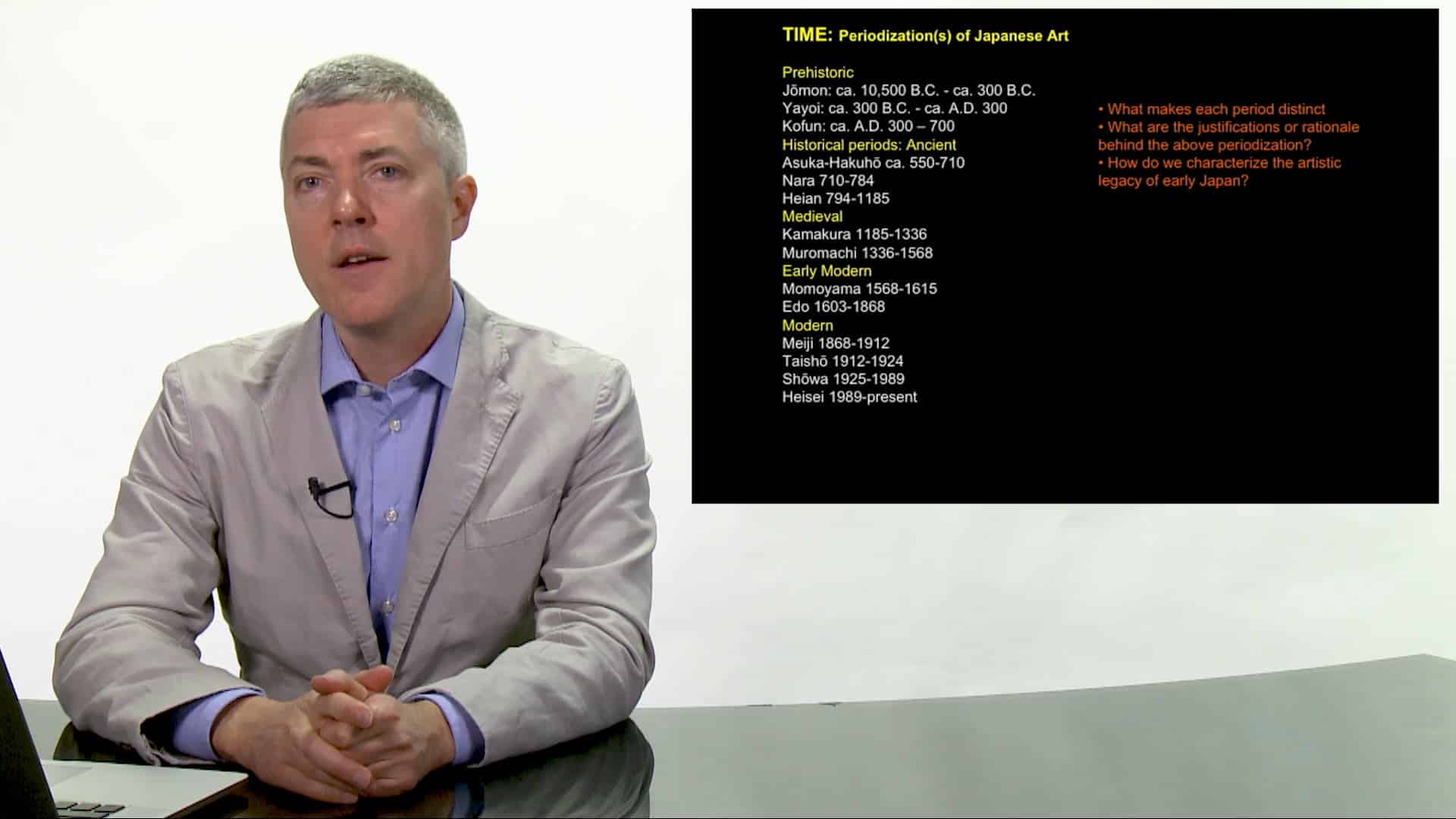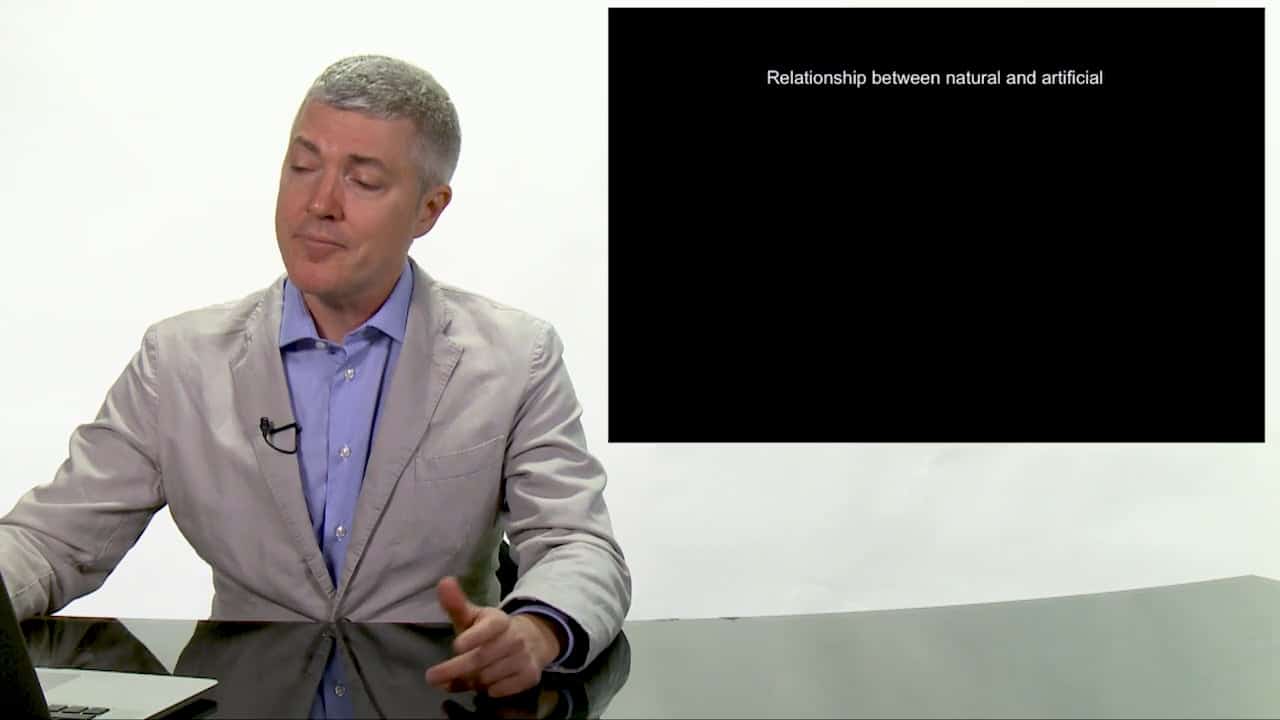Playlist: Keys to Understanding the Arts of Japan
Arts of Japan: Part 1
1. Introduction: Where to Begin
- Great Wave off the Coast of Kanagawa, from 36 Views of Mount Fuji, by Katsushika Hokusai
2. How to Begin
- Comparison
- Place
3. General questions / issues
4. Transhistorical themes to think about
Arts of Japan: Part 2
1. Periods in Japanese History Timeline
2. What Makes Japanese Art Unique?
3. Material
- Clay (Haniwa figures – Kofun or Old Tomb period)
- Wood
- Lacquer
- Paper
4. Playfulness
- Haniwa dog
- Lion and Tiger by Soga Shohaku
- Chinese Lions by Kano Eitoku
- Frolicking Animals by Chōjū-giga
Arts of Japan: Part 3
1. Relationship between the Natural and the Artificial
- The Ryoanji Temple
2. Architecture
- Comparison: of Katsura Villa with Versailles
Arts of Japan: Part 4
1. How does the artist view his/her past?
2. What is the relationship between artist and patron?
- Shaka Triad
- Tale of Genji Scrolls
- Night Attack on the Sanjō Palace (ca. 1275)
Arts of Japan: Part 5
1. How does the artist view his/her past? (continued)
- Red Robed Daruma
2. Relationship between the Indigenous and the Imported
- Comparison of Traveling among Mountains and Streams by Fan Guan (c. 1000 Chinese) and Pine Trees on the Beach (with Birds and Flowers of the Four Seasons) (16th c.)
3. Continuity of Place; Pictures of Famous Places (meisho/meisho-e)
- The Tales of Ise, Yatsuhashi by Ogata Kōrin
- Great Wave off the Coast of Kanagawa, from 36 Views of Mount Fuji, by Katsushika Hokusai
About the Speaker
Matthew McKelway, Takeo and Itsuko Atsumi Professor of Japanese Art History, Art History & Archaeology, Columbia University.
Slides for Classroom Use
Keys to Understanding the Arts of Japan – Presentation PDF [35 MB]
Teaching Guide
Outline & Key Points for Teachers
Background Reading and Classroom Material
Shaka Triad in Hōryūji Temple [Wikipedia]
Image for this bronze sculpture, 623 CE.
What is a Waka? [AFE]
Article on Waka with classroom exercise.
Recommended Reading
There are 2 books that are highly recommended as background reading for this series:
Asian Art
by Dorina Neave, Lara C. Blanchard, and Marika Sandar (Pearson/Prentice Hall, 2015)
Includes sections on South Asia and SE Asia, for your reference also. Winner of the Franklin Buchanan Prize for Outstanding Curriculum Resource, awarded by the Association for Asian Studies, Committee on Teaching about Asia.
Teaching East Asian Art: Content, Context, and Pedagogy
edited by Sheng Kuan Chung (NAEA, 2012)
Other books:
How to Look at Japanese Art
by Stephen Addiss (NY: Harry N. Abrams, 1996)
How to Read Chinese Paintings
by Maxwell K, Hearn (NY: Metropolitan Museum of Art, 2008)
Related Videos
Keys to Understanding the Arts of China
Teaching East Asian Art in AP Art History
Teaching the Arts of China across the Curriculum K-8










